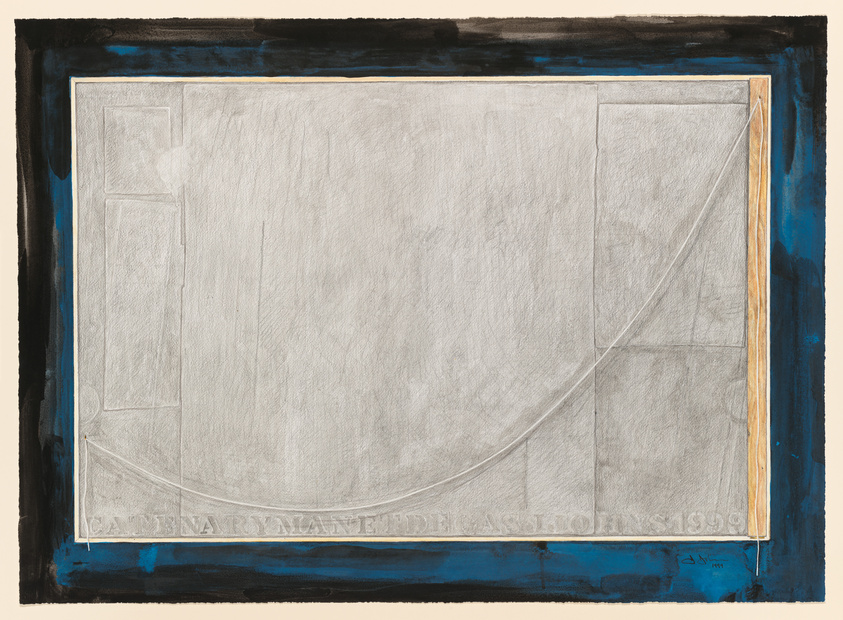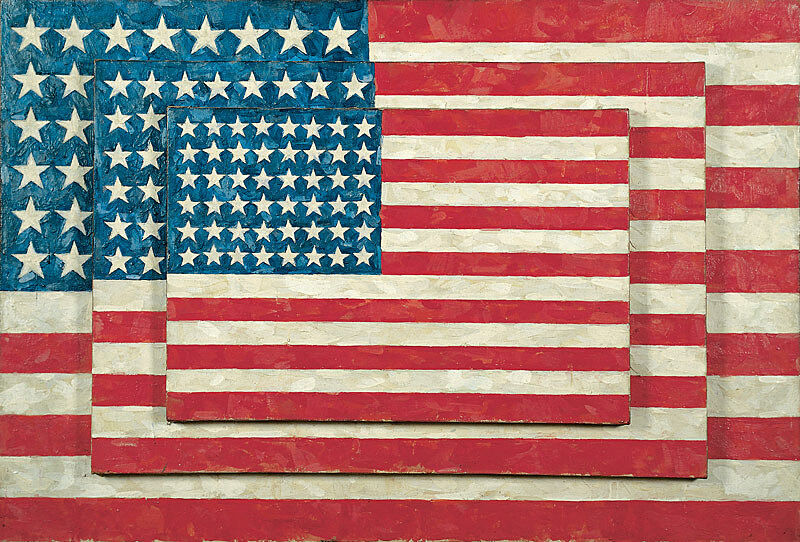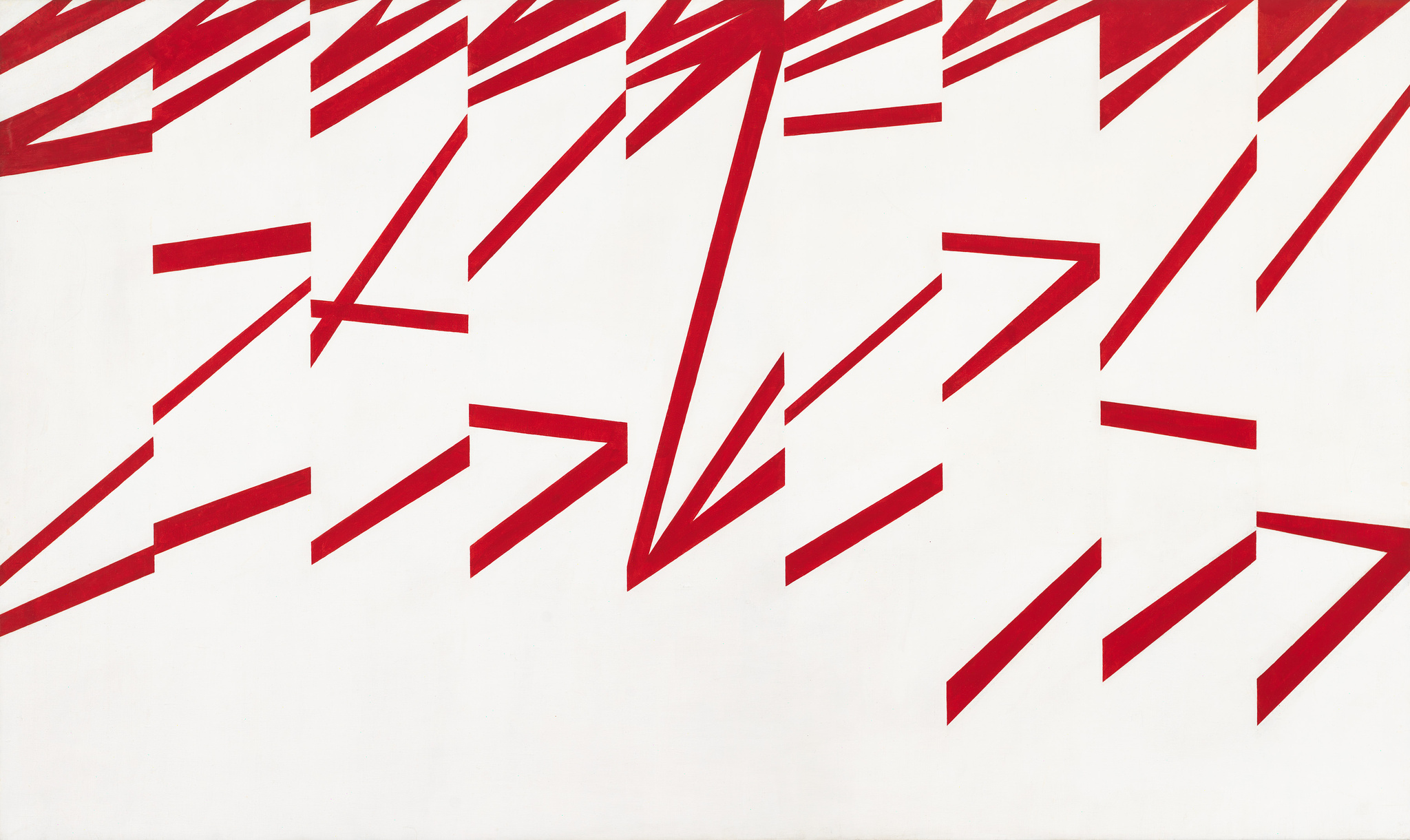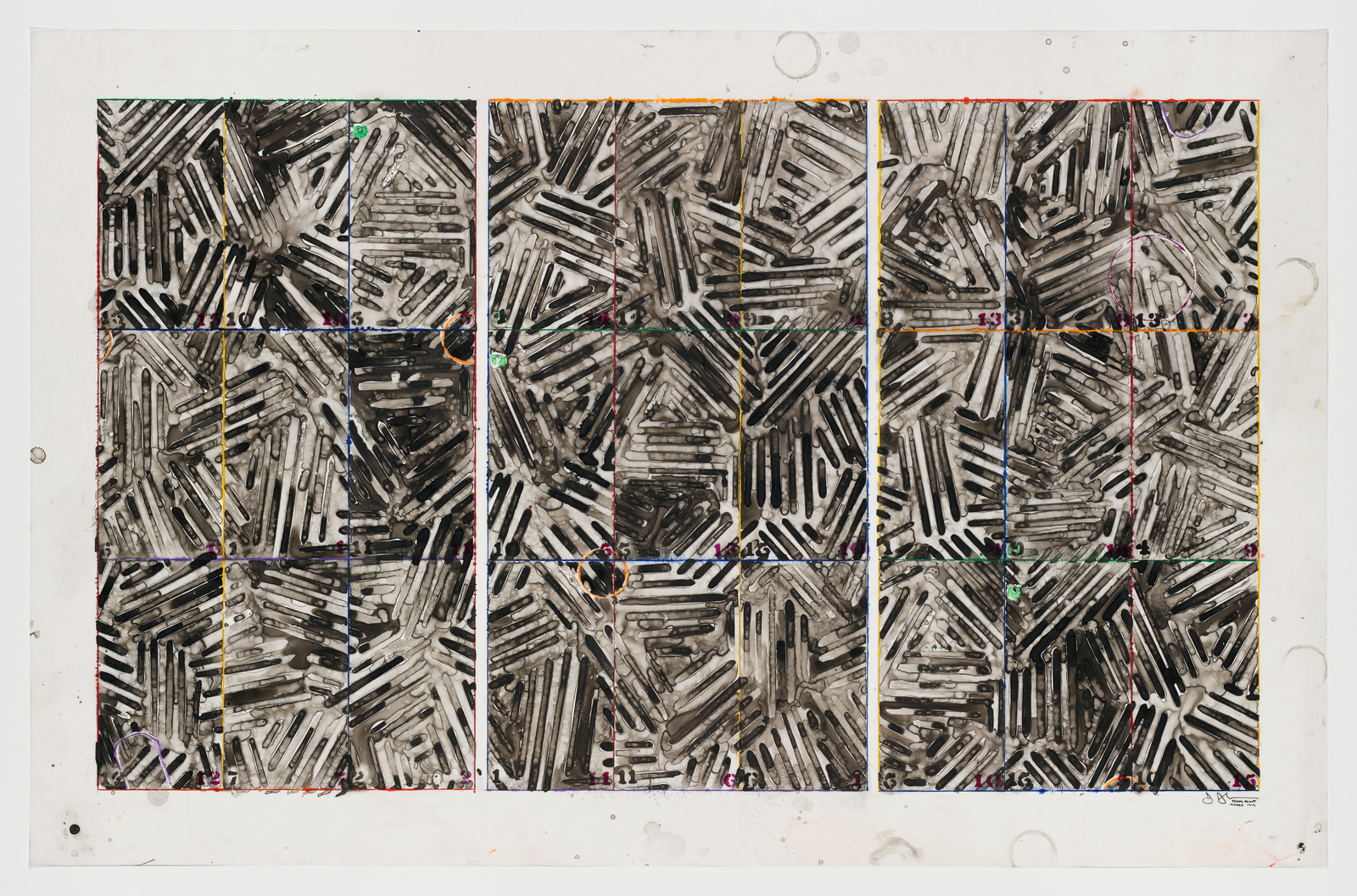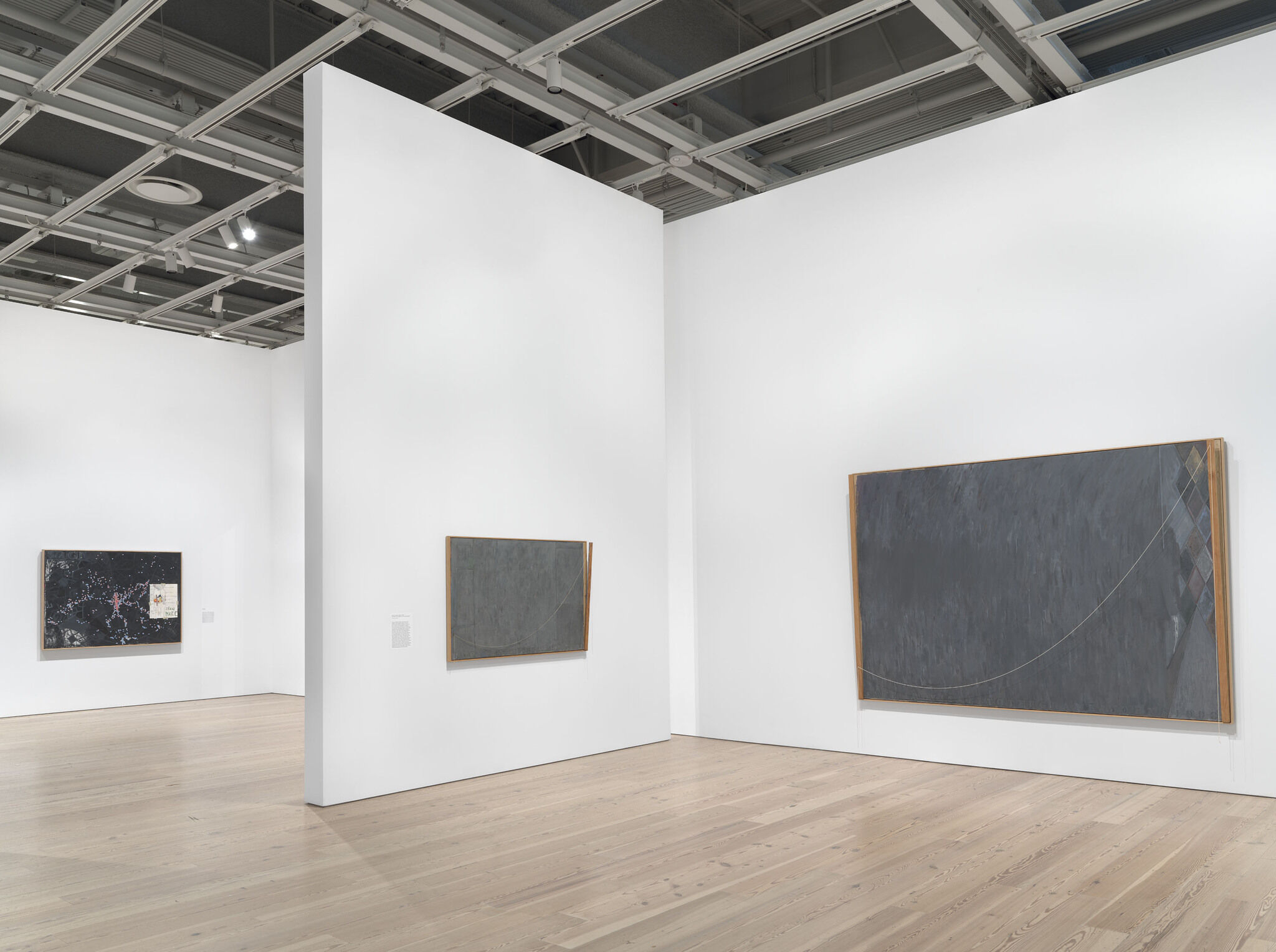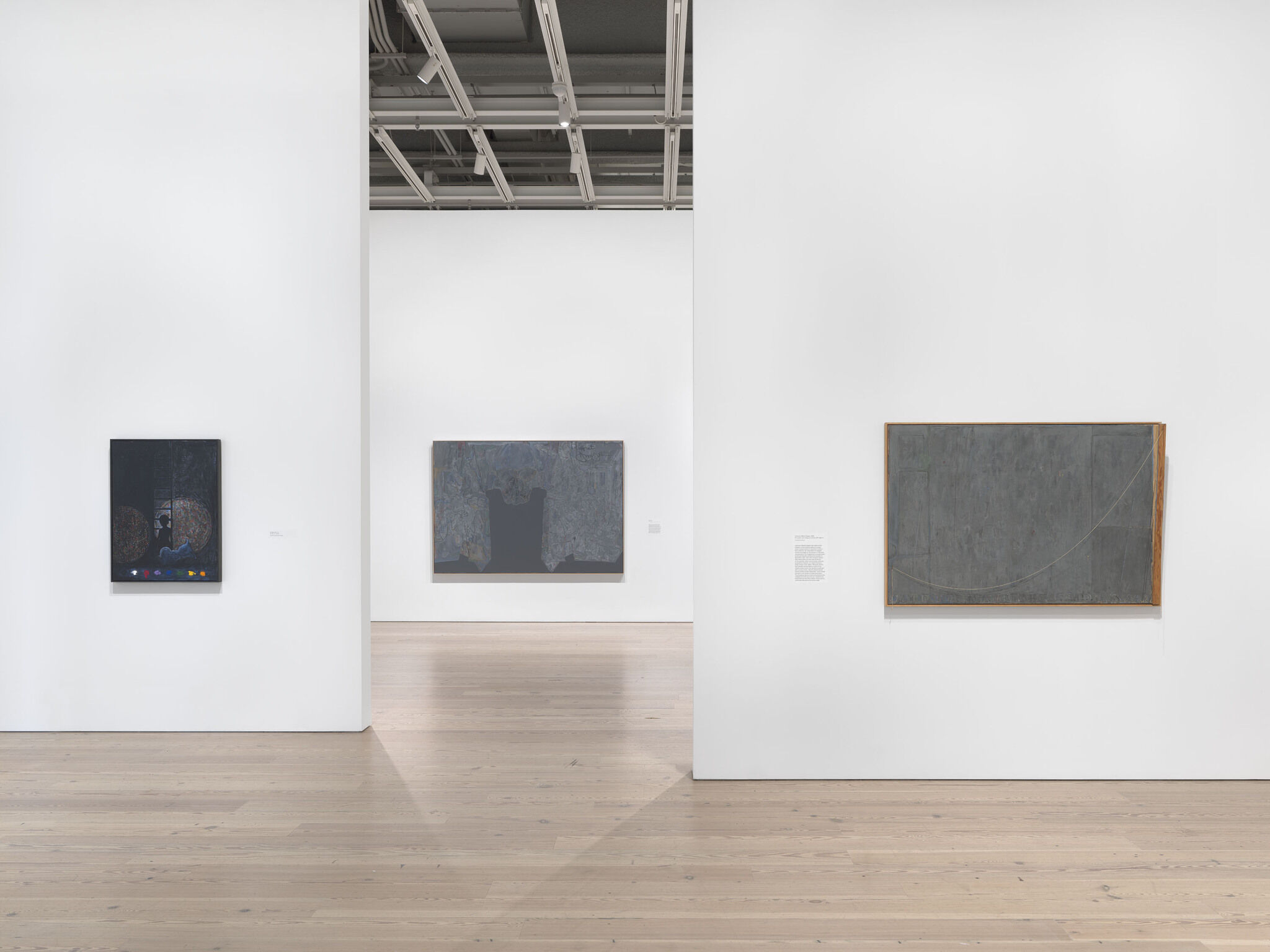In the drawing Catenary (Manet-Degas), Jasper Johns personalizes the peculiar fate of Édouard Manet’s painting The Execution of Maximilian (1867-68), which had been cut into sections and dispersed, it is believed, after Manet’s death. Edgar Degas later painstakingly recouped four of the fragments and, in 1896, partially rehabilitated the work by gluing the recovered pieces to a larger canvas in positions corresponding to their original placement. The faint rectangular outlines in the main gray section of Johns’s drawing represent the contours of the four sections in Degas’s reconstruction. The curved line running from bottom left to top right depicts a string making a catenary curve—an arc formed by dropping a cord from two fixed points (and frequently used in the design of suspension bridges). The catenary unites the fragments of the composition, metaphorically linking Manet to Degas to Johns in a larger art historical context. This chain is reinforced by the stenciled letters at bottom reading “CATENARYMANETDEGASJ.JOHNS1999.”
Not on view
Date
1999
Classification
Drawings
Medium
Graphite pencil, watercolor, acrylic and brush and ink on paper
Dimensions
Sheet: 25 5/16 × 33 1/2in. (64.3 × 85.1 cm)
Accession number
2002.281
Credit line
Whitney Museum of American Art, New York; gift of The American Contemporary Art Foundation, Inc., Leonard A. Lauder, President
Rights and reproductions
© Jasper Johns / Licensed by VAGA at Artists Rights Society (ARS), New York

